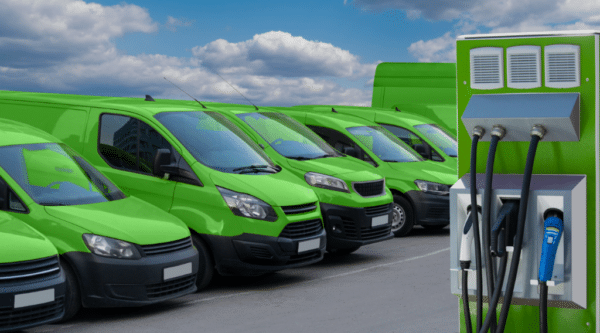In recent years, headline-grabbing moves by corporations such as Amazon and AT&T have highlighted the shift toward electrifying light-duty fleets. However, it’s time to broaden our perspective. Current research indicates that in the United States alone, millions of medium-duty fleet vehicles are poised for electrification.
A sense of urgency permeates the minds of many fleet managers eager to plan the transition to electric vehicles, yet many hesitate, waiting for an opportune moment. The reality is clear: the right time is now. Here are five compelling reasons to initiate fleet electrification without delay.
1. Many Fleet Vehicles are Prime Candidates for Electrification Now
Fleet managers might be astonished to discover the extent to which their vans and trucks are suitable for electrification. While numerous cars and light-duty trucks (classes 1 and 2) have already transitioned, a significant portion of medium-duty vehicles (classes 3–6) are also ready to embrace this change.
Current advancements in battery technology enable trucks in classes 3–6 to achieve up to 200 miles on a single charge. For fleets operating on a hub-and-spoke model with centralized depots, this range is well-suited to their typical routes, making these vehicles excellent candidates for electrification. Research from the National Private Truck Council (NPTC) and the North American Council on Freight Efficiency (NACFE) suggests this applies to approximately 20 million vehicles across the U.S.
Provided that depot-based charging infrastructure is available, fleet operators can seamlessly integrate charging into drivers’ routines. Whether during route intervals or overnight, sufficient opportunities exist for recharging, alleviating concerns associated with transitioning from traditional refueling methods.
2. Regulations are Coming

Electrifying your fleet now also places you ahead of impending regulations. In the near future, fleet electrification won’t just be an option—it will be a mandate. For example, California requires that 10% of fleet vehicles transition to electric by 2025, with aims for complete electrification across all vehicle classes by 2042.
This regulatory trend is not confined to California; legislative bodies nationwide are contemplating similar mandates. Proactive electrification positions fleets for seamless compliance, avoiding future disruptions.
3. Tax Credits and Incentives Won’t Last Forever
The current landscape of substantial federal and state incentives underscores the financial prudence of early fleet electrification. Businesses that act swiftly can capitalize on federal tax credits covering 30% of vehicle costs or up to $40,000 depending on the vehicle’s weight, and 6% or up to $100,000 per item for charging infrastructure. Many states also have incentives for commercial fleet electrification.
These incentives are designed to spur early adoption but are not indefinite. Delaying electrification risks missing out on these significant financial benefits, potentially escalating the costs of future transitions.
4. Fleet Electrification Saves Money in the Long Run
Despite the initial investment required, the long-term economic benefits of fleet electrification are compelling (though this can be mitigated by partnering with a fleet Charging-as-a-Service provider such as Electrada, which covers 100% of the capital expense to design, build and manage fleet EV charging infrastructure). Fleet operators must look past the immediate costs to see the long-term gains.
Research from McKinsey and Company forecasts that many electric trucks, including heavy-duty models, will achieve cost parity with gasoline-powered counterparts within a decade, with some reaching this milestone even sooner. Lower and more stable electricity costs, coupled with reduced maintenance needs for electric vehicles, promise considerable savings over time.

5. Your Reputation is on the Line
Sustainability is increasingly vital to consumers, particularly among younger demographics. A recent survey found that two-thirds of U.S. consumers, and 80% among those aged 18–34, are willing to pay more for sustainable products. The visibility of your transportation and delivery operations makes your fleet electrification efforts a significant aspect of your company’s public image. Delaying these green initiatives could tarnish your brand’s reputation.
A Seamless Transition to an EV Fleet with Electrada
With numerous vehicles ready for electrification, beneficial tax incentives, and impending regulations, the argument for fleet electrification is undeniable. Although some operators find the transition daunting, Electrada’s 360 Charging-as-a-Service (CaaS) solution simplifies the electrification process from planning through day-to-day management, allowing you to focus on the value of your newly electrified fleet. 360 CaaS also covers 100% of the capital expense to build and manage your fleet-tailored EV charging infrastructure, delivering contract-backed 99% uptime reliability at one predictable price for charging for the life of the relationship.
For a deeper dive into the urgent need for commercial fleet electrification, read our recent white paper. If you have questions, we’d love to hear from you, so please get in touch.



